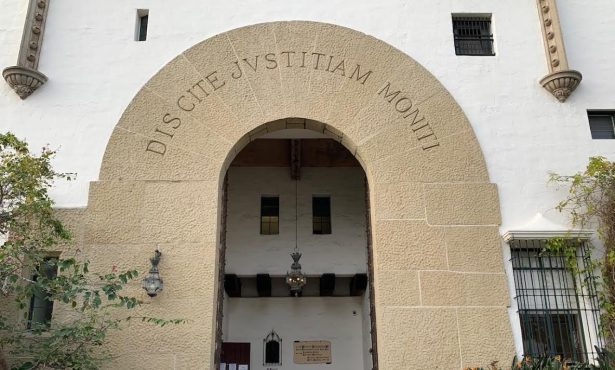Plains All American Pipeline to Pay $230 Million in Oil-Spill Settlement
Class-Action Lawsuit Brought by Santa Barbara Fishermen, Shoreline Residents Affected by 2015 Refugio Oil Spill

Plains All American Pipeline, the oil corporation behind the 2015 oil spill that unleashed an estimated 142,800 gallons of crude oil into the ocean off the Santa Barbara County coast near Refugio State Beach, will pay $230 million in a settlement for a class-action lawsuit brought by fishermen and shoreline residents affected by the spill. Final approval of the lawsuit settlement was granted last week by a federal judge in Los Angeles.
The settlement agreement was reached in May, seven years after Plains’ Line 901 oil pipeline ruptured, due to what the law firms that filed the suit called “failed maintenance and extensive pipeline corrosion” in a press statement. The spillage had spread to cover Santa Barbara beaches and harmed wildlife, tourism, and fishing, as well as local properties.
Representatives from the Commercial Fishermen of Santa Barbara (CFSB), a nonprofit that works with the fishing community to maintain economic and biological standards of the port and provide quality seafood, explained about how the oil spill impacted some of the fishermen involved in the suit.
“[The spill] excluded them from fishing grounds during the spill and during the cleanup, then required them to be part of the cleanup,” said Kim Selkoe, executive director of CFSB. “It also hurt demand in the area, which affected catch from anywhere within a 100-mile radius, even while the spill was a small postage within that radius. The oil circulated off the coast afterward, which reduced catches even more.”
Chris Voss, president of CFSB, reiterated how the area covered by the oil closed a lot of fishing areas.
“When the [spill] happened, we lost a considerable amount of area that we fish in. Subsequently, the oil drifted down as far as the L.A. basin,” Voss said. “There were also news reports that tainted [the image of] our products in the marketplace.”
Sign up for Indy Today to receive fresh news from Independent.com, in your inbox, every morning.
He went on to tell me about how the press revolving around the Refugio Oil Spill affected the local demand for fish, especially within the context of it following another high-profile environmental disaster in Santa Barbara: the 1969 Santa Barbara oil spill.
“It became national, even international news, that there was another oil spill in Santa Barbara,” Voss said. “When the platform [had blown up] in 1969, a lot of powerful environmental organizations came out in Santa Barbara in reaction to that oil spill. But when it happened again, in the marketplace, people who buy [fish or related goods] on a regular basis now thought ‘Maybe I shouldn’t buy it now. Maybe I won’t be able to sell it because my consumers will ask where it’s from, and if you tell them it’s from Santa Barbara, they’ll ask if there’s any oil on it.’”
He recalls one individual who had to dump their entire catch after being ordered to by the Department of Fish and Wildlife.
While the approved settlement will benefit some, Voss said some fishermen are still awaiting final results before celebrating.
“In general, the guys are skeptical that anything substantive will come out of it,” Voss said. “But the hope is that when it all is resolved, there will be legitimate compensation for the oil impacts.”
People who believe they may be entitled to some compensation — including those who “owned or leased residential beachfront property or property with a private easement to a beach where oil from the 2015 Santa Barbara oil spill washed up and the oiling was categorized as heavy, moderate, or light,” according to the settlement — have until October 31 to file a claim on the Plains All American Pipeline spill settlement website here.
Support the Santa Barbara Independent through a long-term or a single contribution.



